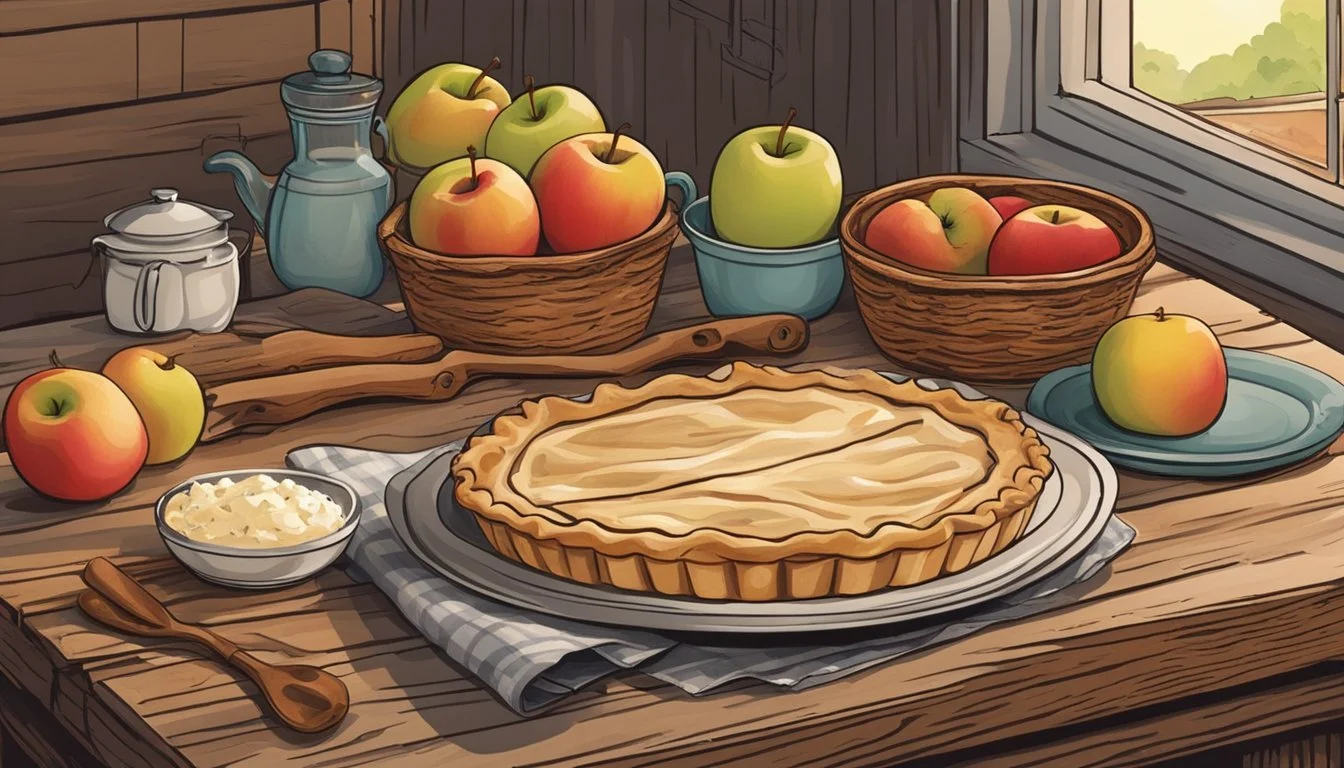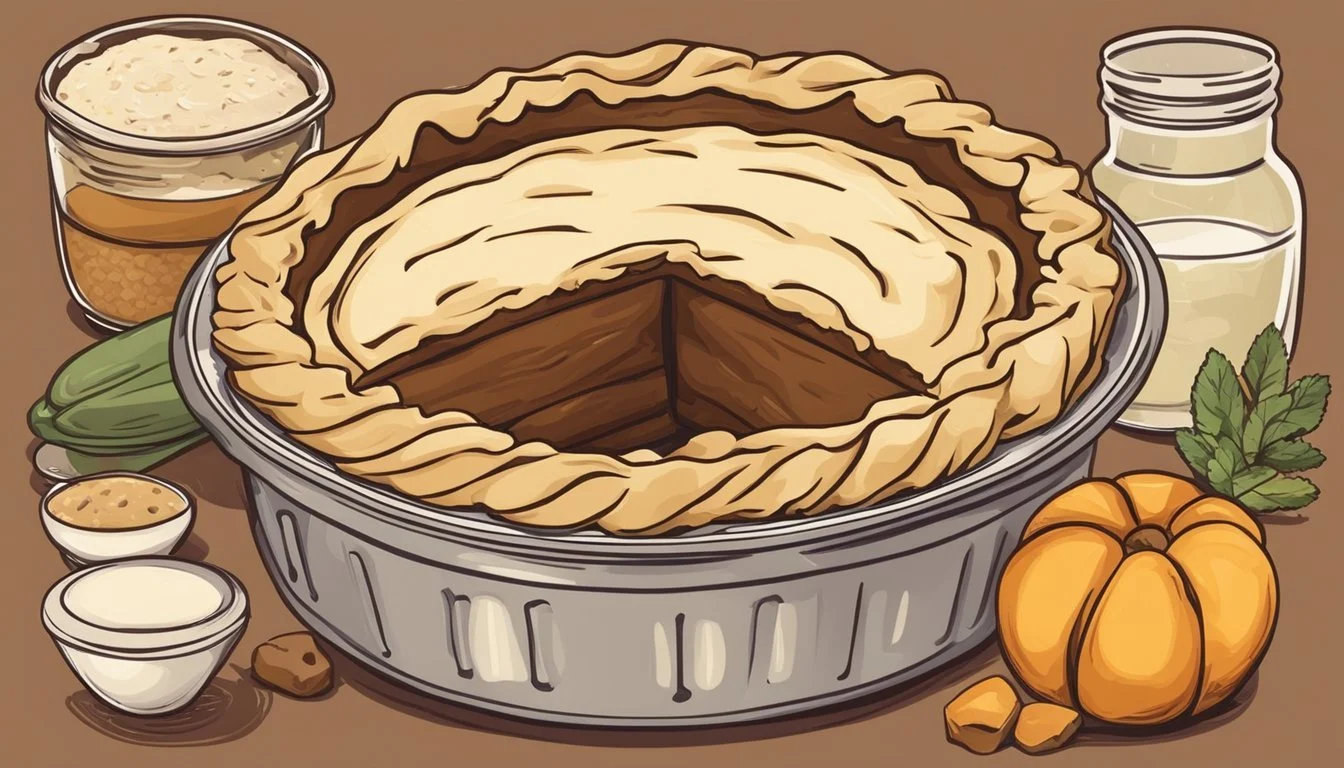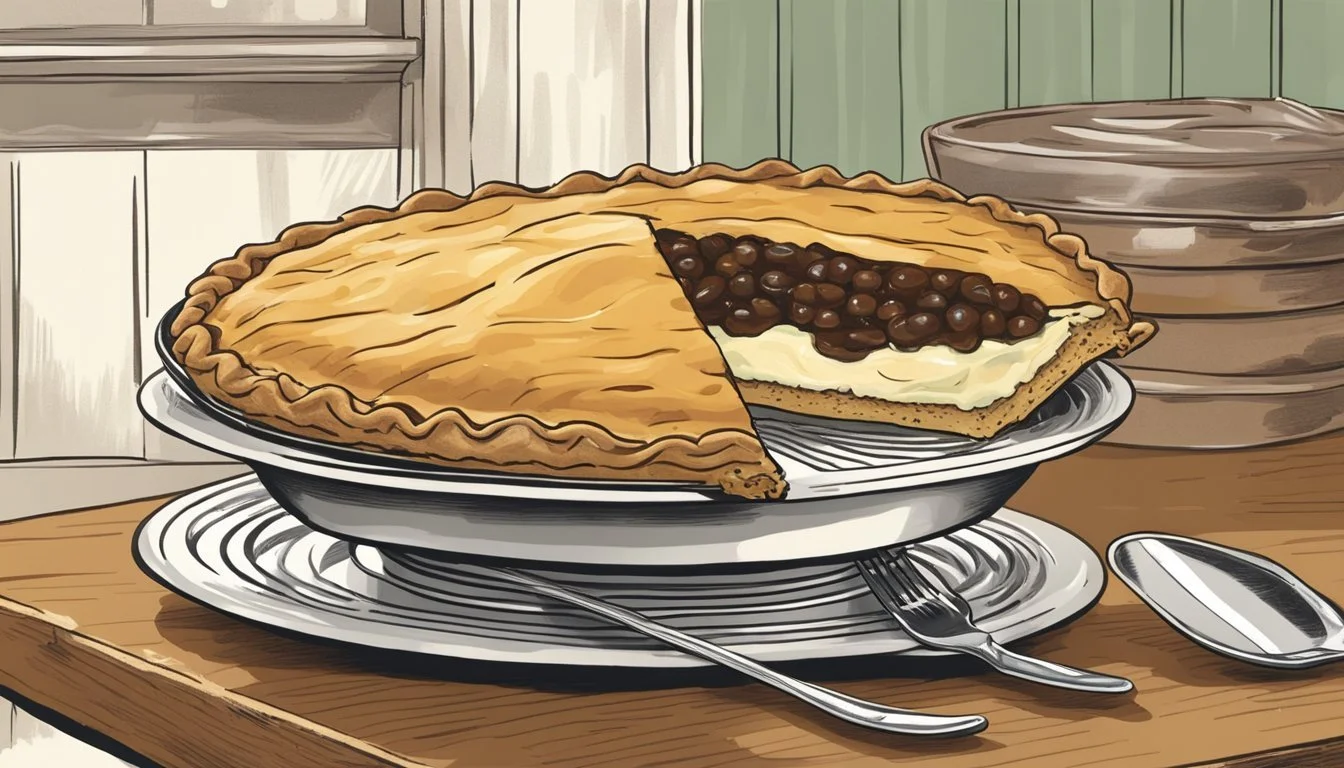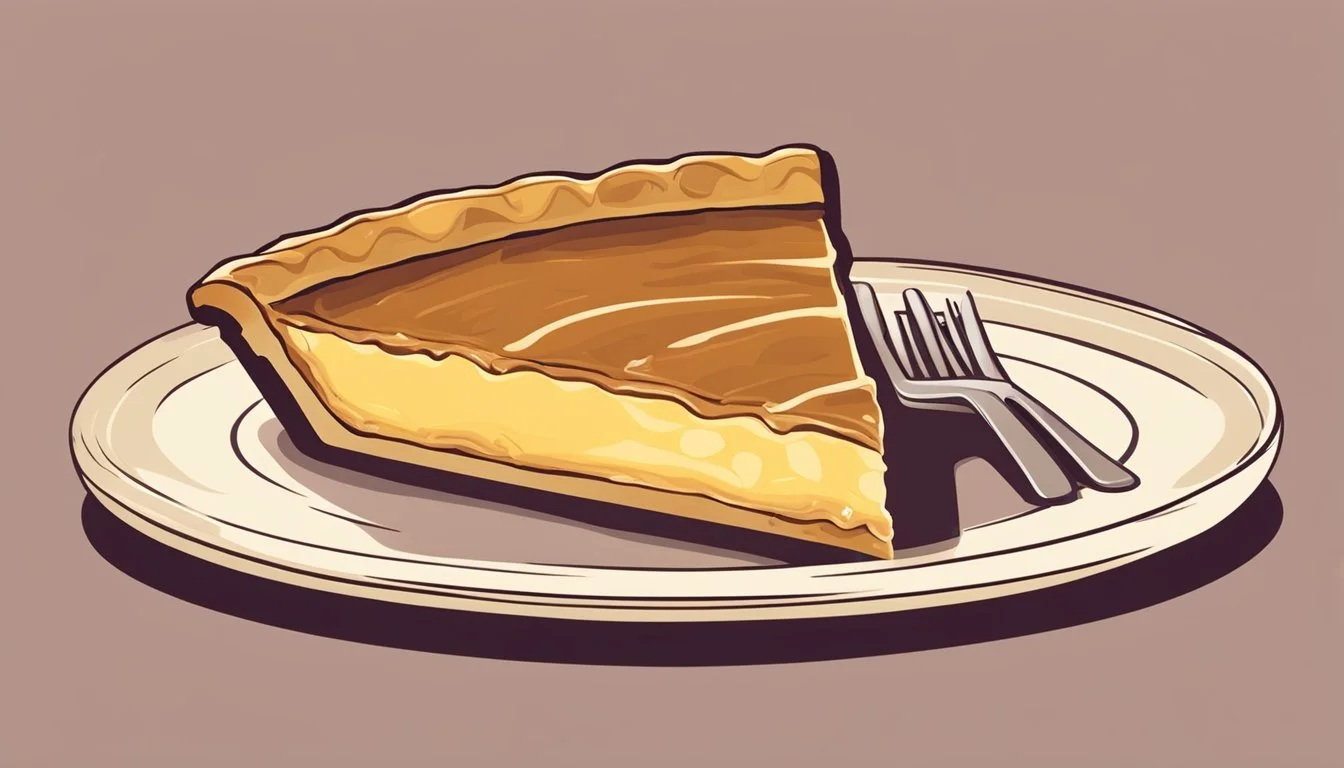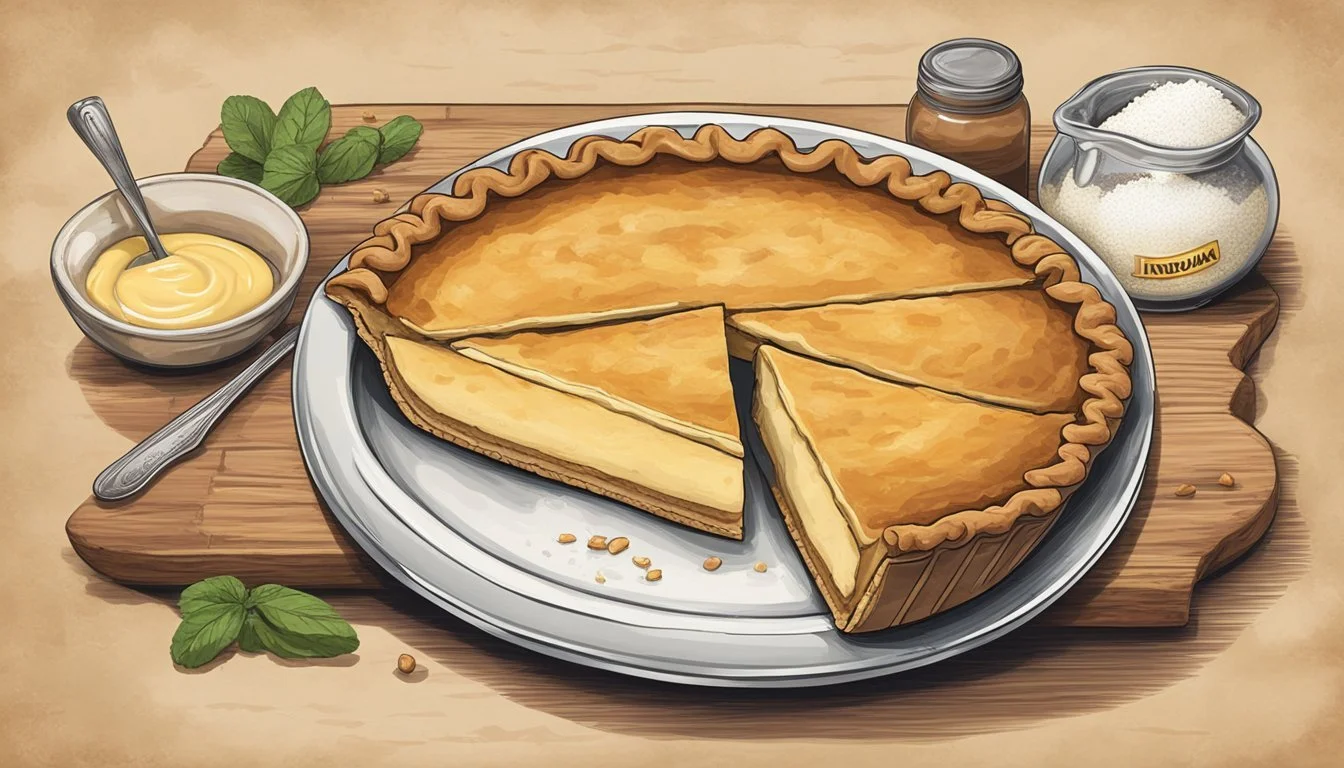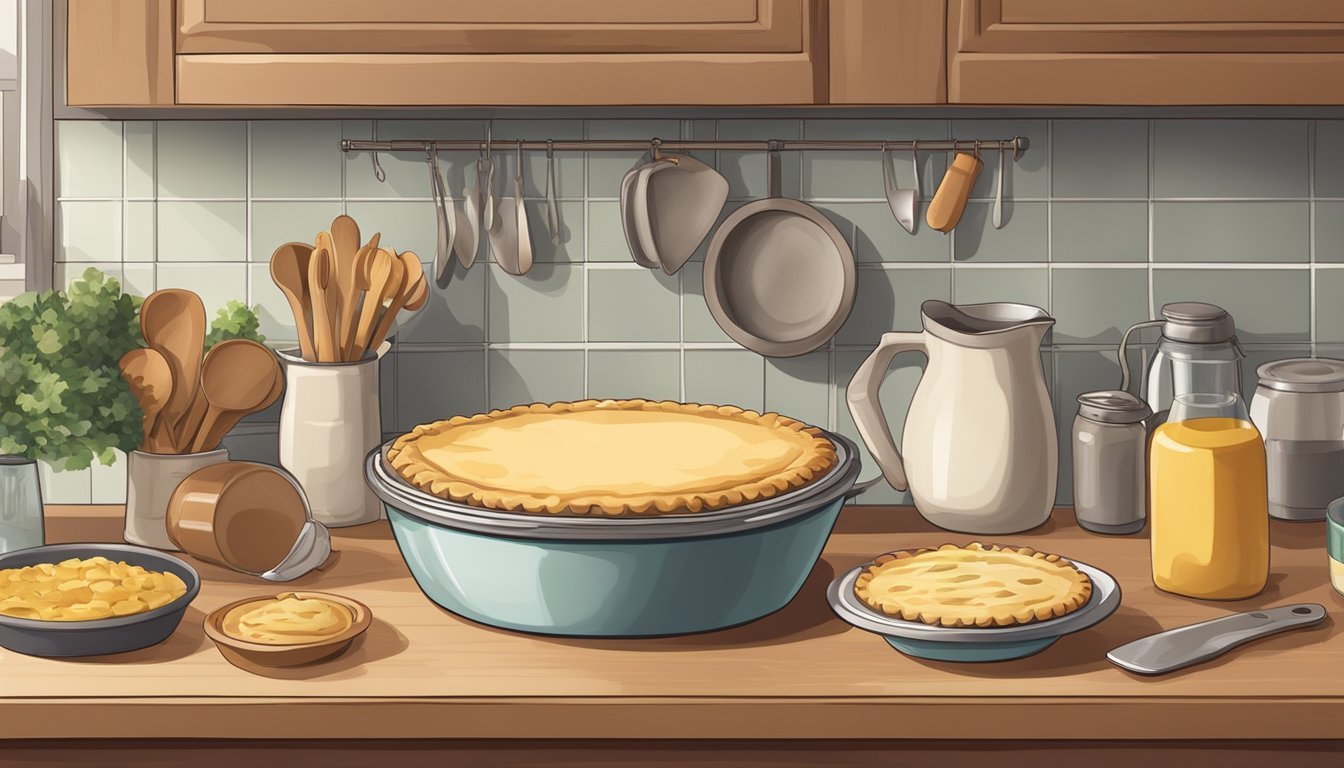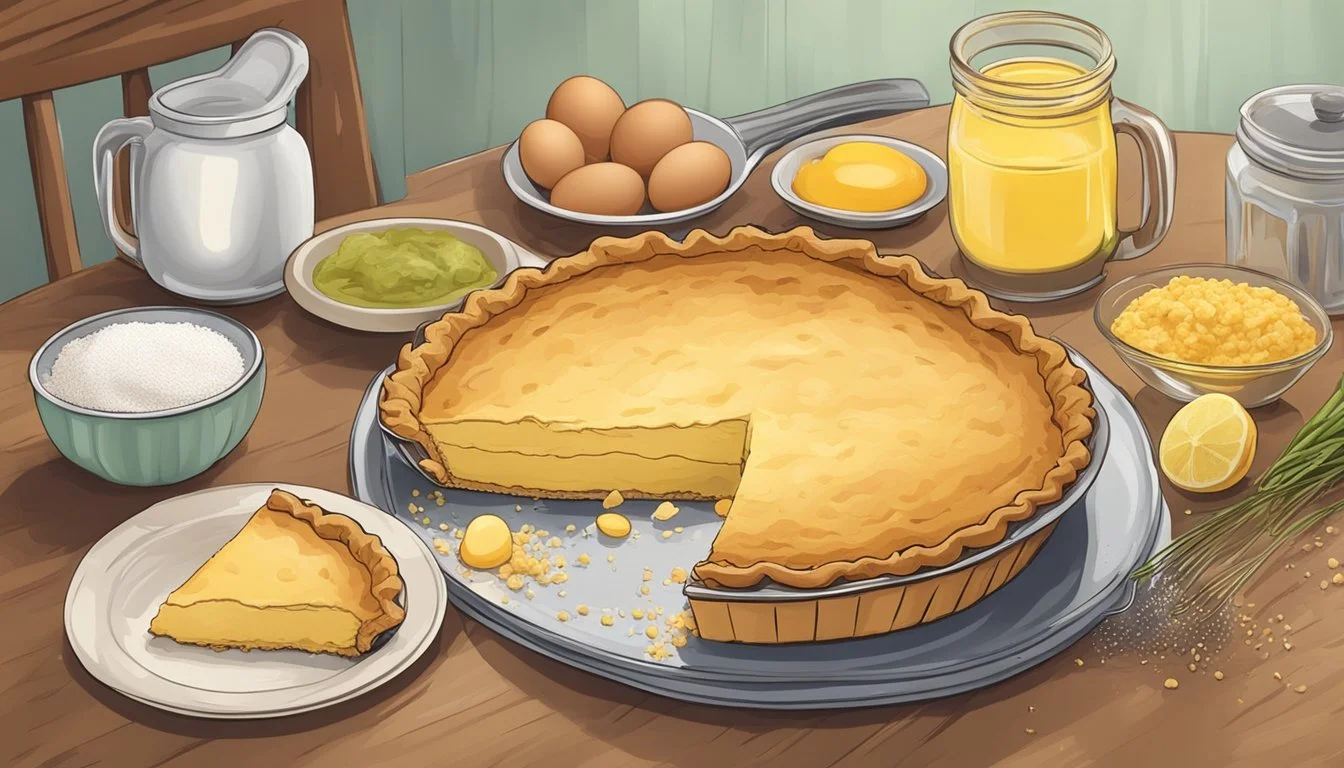Is Hoosier Pie Vegan?
Unveiling the Traditional Dessert's Ingredients
Hoosier pie, traditionally known as Indiana's state dessert, is a sweet, simple custard pie characterized by its smooth filling comprised primarily of sugar, cream, and butter, often spiced with a dash of cinnamon. Common in the Midwest, this dish also goes by names such as sugar cream pie or desperation pie. The latter moniker reflects its historical roots as a recipe born out of economic necessity, designed to utilize readily available pantry ingredients during times when fresh produce was scarce.
As veganism continues to grow in popularity, due in part to health considerations, environmental factors, and ethical concerns regarding animal welfare, many classic dishes are being revisited with the aim of creating plant-based versions that align with vegan dietary practices. A quintessential Hoosier pie, however, poses a challenge for vegan adaptation because its defining ingredients include dairy products, which are not consumed in a vegan diet.
To determine whether Hoosier pie can be modified to suit a vegan lifestyle, one must consider the feasibility of substituting the dairy components with plant-based alternatives that can replicate the pie's signature creamy consistency and rich flavor profile without compromising the integrity of the beloved Hoosier classic. It stands that the answer to the question of Hoosier pie’s compatibility with veganism is not straightforward and hinges upon the successful veganization of its core ingredients.
Origins of Hoosier Pie
Hoosier pie, a traditional dessert in Indiana, has roots that reflect the state's cultural and culinary history.
Cultural Significance in Indiana
Hoosier pie, often referred to as sugar cream pie or finger pie, is a quintessential component of Indiana's culinary traditions. This simple, old-fashioned dessert became the official state pie of Indiana in 2009. Openly celebrated for its use of commonplace ingredients, Hoosier pie is deeply ingrained in the state's identity, where it is affectionately embraced as a symbol of Hoosier hospitality.
The pie's association with Indiana, also known as the Hoosier State, is not coincidental; its recipe aligns with the practicality that pioneer families needed and commonly available ingredients they had, such as cream, sugar, and flour. It's a dessert born out of necessity and simplicity, linked to Indiana's Amish heritage and reflective of a straightforward approach to baking.
Bold flavors or elaborate preparation do not characterize Hoosier pie; rather, its significance lies in the communal aspect it represents—a treat to share among friends and family, an embodiment of the state's down-to-earth character. Its enduring presence speaks to generations of Indiana residents who have savored this comforting dessert as part of their homegrown traditions.
Traditional Hoosier Pie Ingredients
Hoosier Pie, traditionally known as Sugar Cream Pie, embodies simplicity and richness with its few staple ingredients. Dairy plays a pivotal role, and specific spices enhance its flavor, all nestled within a foundational crust.
The Role of Dairy in Hoosier Pie
Dairy ingredients provide the creamy texture and rich taste that Hoosier Pie is known for. The pie typically includes:
Heavy cream or half-and-half: the base of the filling
Butter: unsalted, adds fat and flavor
These dairy components contribute significant amounts of saturated fat and cholesterol to the dessert.
Common Spices and Flavorings
Spices and flavorings are critical to giving the Hoosier Pie its characteristic taste:
Sugar: the primary sweetener
Vanilla extract: for a subtle, aromatic flavor
Nutmeg and cinnamon: often sprinkled on top for a warm spice note
Each recipe may vary slightly in the spices used, but sugar and vanilla are almost always included. Cinnamon and nutmeg are common, though the amounts can be adjusted to taste.
Hoosier Pie Crust Essentials
The crust serves as a vessel for the rich filling, made from:
Flour: the base of any pie crust
Fat: usually in the form of shortening, lard, or butter
Salt: to balance the sweetness of the filling
Water: to bind the crust ingredients together
A standard Hoosier Pie crust is not made with eggs, which helps keep the focus on the creamy filling. When preparing the crust, one must ensure it's baked to the right texture to hold the liquid filling without becoming soggy.
Hoosier Pie Preparation and Cooking
Hoosier Pie, traditionally known as sugar cream pie, is characteristic of its creamy, pudding-like filling. Accurate preparation and cooking techniques are crucial to achieving its signature texture.
Mixing Methods
The process begins in a saucepan where sugar and cornstarch are blended with cream to form the filling's base. Consistent whisking is fundamental to prevent lumps and scorching. The mixture is cooked until thick, often described as the consistency of thick pudding, and then butter and vanilla extract is folded in to enrich the flavor.
Combine ingredients: Sugar, cornstarch, and a pinch of salt are combined.
Add liquids: Heavy cream, and in some recipes half and half, are gradually whisked into the dry ingredients.
Heat and whisk: The saucepan is placed over medium heat. Continuous whisking ensures even cooking.
Final touches: Once thickened, butter cubes are added off heat alongside vanilla extract for flavor.
Baking Considerations
Preparation of the pie dough is the first step, which requires blind baking—where pie weights or alternative items like beans on top of parchment paper are used—ensuring a crisp crust. To avoid an overly browned edge, a strip of foil can be applied around the pie's rim during the final stages of baking. After filling the crust with the mixture, baking must proceed until the filling shows a slight jiggle in the center. The pie is then rested on a wire rack to cool, which allows the filling to set before serving. Refrigeration aids in firming up the pie, and if necessary, the pie can be frozen for later enjoyment.
Prep Time: Blind baking and cooling, followed by baking with filling, defines the overall prep time.
Baking in Oven: Bake first with pie weights, then fill and bake until set.
Post-baking: Pies cool on a wire rack, then they are either served or refrigerated.
Dietary Variations of Hoosier Pie
Hoosier pie traditionally consists of a creamy custard-like texture made with dairy products, thus presenting a challenge for those following gluten-free or vegan diets. This section explores how to adapt this Indiana classic to cater to these dietary requirements.
Gluten-Free Alternatives
For a gluten-free Hoosier pie, one must replace the traditional wheat-based pie crust with a gluten-free alternative. Ingredients such as almond flour, coconut flour, or a blend of gluten-free flours can serve as suitable substitutes. These flours not only omit gluten but often add nutritional value by providing additional protein and fiber.
Crust Options:
Almond flour: Rich in protein and fiber
Coconut flour: High in fiber, lower in carbohydrates
Gluten-free all-purpose flour: A convenient substitute
These crusts should be combined with other gluten-free ingredients, such as gluten-free baking powder if needed, to ensure the entire dessert aligns with dietary restrictions.
Vegan Adaptations
To adapt Hoosier pie for a vegan diet, one should replace dairy milk with plant-based alternatives like coconut milk or almond milk, and use vegan butter instead of traditional dairy butter. These substitutes maintain the creamy consistency of the filling, essential for achieving the characteristic Hoosier pie texture.
Filling Ingredients:
Milk Replacement: Coconut milk, for its richness and creaminess
Butter Replacement: Vegan butter or coconut oil, for a similar fat content
Egg Replacement: Agar-agar or arrowroot starch, to maintain the custard's firmness
While sweet potato pie is another type of custard pie often more easily adapted to vegan recipes due to its inherent reliance on the custard properties of sweet potatoes, vegan Hoosier pie retains its traditional flavor profile through the careful selection of plant-based ingredients that mimic the original dairy components.
Serving and Storing Hoosier Pie
When presenting and storing Hoosier Pie, one should strive for a pie that maintains its creamy texture and rich vanilla flavor. The right techniques can make a significant difference in preserving the dessert’s quality, whether for immediate serving or future enjoyment.
Presentation Tips
A perfect Hoosier Pie, known for its creamy vanilla filling, merits a presentation that underscores its simplicity and homemade charm.
Saucepan to Table: After the pie filling has been cooked to a creamy thickness using a saucepan, it should be given sufficient time to set before serving.
Refrigerate: A brief refrigeration can help the pie firm up, making it easier to slice neatly.
Garnishing: A dusting of cinnamon or a dollop of whipped cream can elevate the look and taste.
Dessert Plates: Use clean-cut dessert plates and a pie server for a tidy presentation during occasions like Thanksgiving or Christmas.
Storage Techniques
Storing Hoosier Pie correctly is essential for retaining its texture and flavor, particularly if making it ahead of a busy holiday.
Cooling Down: Allow the pie to cool to room temperature after baking to avoid condensation inside the storage container.
Refrigerate:
Short Term: Wrap the pie with plastic wrap and keep it in the refrigerator if intending to serve within a few days.
Long Term: For longer storage, airtight containers are recommended to avoid absorbing fridge smells.
Pie Filling: To store just the homemade pie filling, one might opt for airtight containers in the refrigerator, ensuring it remains creamy and ready for the next pie crust.
Freezing: Although freezing is possible, it may alter the creamy texture of the pie filling, so it is less recommended for a Hoosier Pie.
Nutritional Information of Hoosier Pie
Hoosier Pie, traditionally known as Sugar Cream Pie, is rich in calories and carbohydrates due to its sweet filling and buttery crust. The primary ingredients contributing to its nutritional content include sugar, cream, and butter. A standard serving of Hoosier Pie can have significant amounts of sugar and saturated fat.
Caloric Content: A typical slice of Hoosier Pie may contain:
Calories: Approximately 450-550 calories per slice
Macronutrient Breakdown: The pie's nutrient profile is dominated by carbohydrates and fats.
Carbohydrate: Around 60-70g (of which sugars make up a substantial amount)
Fiber: Negligible; less than 1g
Protein: Approximately 2-3g
Total Fat: About 25-30g
Saturated Fat: Roughly 15g
Cholesterol: Significant levels due to the cream and butter, possibly 75-95mg
Micronutrients:
Sodium: Moderate, depending on the amount of added salt, roughly 150-200mg
The dessert typically does not provide substantial vitamins or minerals and is low in protein and fiber. Its consumption should be moderated, especially for individuals monitoring their intake of saturated fat, cholesterol, or sugars. The nutritional information could vary based on the recipe modifications and serving sizes.
Hoosier Pie in Modern Cuisine
The Hoosier Pie, Indiana's official state pie, has evolved with contemporary trends, integrating new ingredients and expanding into pop culture. From its custard-like texture to its sweet, simplistic essence, it has maintained a revered spot in modern culinary circles.
Contemporary Variations and Trends
Adaptations of this traditional dessert can be seen in various forms. While the classic Hoosier Pie is not vegan due to dairy and butter, modern variations often include vegan substitutes such as:
Non-dairy milk and cream options, like almond, soy, or coconut milk
Plant-based butter or margarine in place of traditional butter
Natural sweeteners like maple syrup instead of granulated sugar
No-bake versions of the pie are in vogue, reducing preparation time and allowing for a denser texture. In some instances, aficionados have likened Hoosier Pie to finger pie, a term used to describe its creamy filling that can be stirred with a finger. It remains a cousin to shoofly pie, another classic dessert focusing on a simple, sugary filling.
Hoosier Pie in Pop Culture
Hoosier Pie's presence has spread beyond the kitchen. Culinary shows and food-focused content often feature this iconic dish, spotlighting bakeries like Wick's Pies that specialize in these desperation pies—so-called for their use of simple, readily available ingredients during desperate times.
The pie’s adaptability has allowed it to blend into various cultural settings, from down-home bakeries to upscale dessert menus. Its recognition as a slice of Indiana heritage and appearances in gastronomy conversations make it a notable subject in culinary discussions.
Hoosier Pie and Indiana's Culinary Identity
Indiana's culinary landscape is a reflection of its history and cultural influences, where traditional dishes hold a place of pride. Among these, the Hoosier Pie, also known as Indiana Sugar Cream Pie, stands out as a hallmark of the state's identity. Often referred to as a desperation pie by the Amish and Shaker communities, it was made during times when the pantry was low on ingredients.
The simplicity of the Hoosier Pie's ingredients, which typically include sugar, cream, and flour, belies its significance to Indiana's heritage. Sometimes flavored with vanilla or nutmeg, the filling is poured into a pie crust and baked until golden and creamy.
Origins:
Amish: They are credited with having a hand in the pie's origins, utilizing accessible ingredients, particularly during the winter months.
Shaker: This religious group, known for their minimalist lifestyle, also favored the simplicity of the recipe.
In 2009, the Hoosier Pie was designated as the official state pie of Indiana, cementing its place in the state's culture.
Culinary Trails:
The Hoosier Pie Trail, part of the Indiana Culinary Trails Passport, beckons residents and tourists to experience a wide variety of pies across the Hoosier State.
In summary, the Hoosier Pie is much more than just a dessert; it's a taste of Indiana tradition, embodying the frugality and resourcefulness of early settlers and continuing to be celebrated across the state.
Making Hoosier Pie at Home
Preparing Hoosier Pie, a classic dessert from Indiana, involves a series of steps that can be easily managed at home. The process requires basic kitchen equipment, simple yet precise ingredients, and an understanding of common baking difficulties that might arise.
Equipment Needed
Saucepan: A large saucepan is essential for cooking the filling to achieve the right consistency.
Whisk: A whisk is necessary to combine ingredients smoothly and to keep the mixture homogeneous while cooking.
Pie Plate/Pan: A standard 9-inch pie plate is required to shape and bake the pie.
Rubber Spatula: Helpful for smoothing the filling into the pie crust.
Optional: Pie weights, dried beans, or uncooked rice for blind baking the crust if using a homemade pie dough.
Ingredient Substitutions
Cream: The core of Hoosier Pie is its creamy filling, traditionally made with heavy cream. Vegan substitutions can be made here:
Heavy cream can be replaced by full-fat coconut milk or a rich cashew cream to mimic the texture and viscosity.
Sugar:
Standard granulated white sugar is used. Ensure that the sugar is vegan as some sugars are processed with bone char.
Butter:
Unsalted butter is used to enrich the filling which can be substituted with vegan butter or margarine to maintain a similar fat content and flavor profile.
Most recipes include a flaky pie crust. Premade pie crust is convenient, but make sure it’s vegan if avoiding animal products. Alternatively, one can make their own using a combination of flour, vegan butter, and a pinch of salt.
Troubleshooting Common Issues
Filling Consistency:
If the filling isn’t thick enough, ensure it’s cooked long enough; large bubbles should appear on the surface during cooking. If too thick, add a bit more cream or its vegan alternative and whisk well.
Browning Pie Crust:
If the edges of the crust brown too quickly while baking, protect them with aluminum foil or a pie shield.
Crust Issues:
If using homemade pie dough, chill it before rolling out to reduce shrinkage. For store-bought or premade pie crust, ensure it's fully defrosted and pressed firmly into the pie pan. Use a fork to prick the base of the crust before blind baking to prevent bubbling.
Conclusion
Hoosier pie, traditionally known as Sugar Cream Pie, is a classic dessert deeply rooted in Indiana culture. It typically contains a custard filling made from butter, flour, cream, and sugar, often topped with a sprinkle of cinnamon sugar. The standard recipe for Hoosier pie is not vegan, as it includes dairy products such as butter and cream.
Those pursuing a vegan diet can still enjoy a version of Hoosier pie by substituting the non-vegan ingredients with plant-based alternatives. For instance, dairy-free butter and plant-based creams, like those made from almonds or coconut, can replace traditional dairy products. It's essential to ensure that the pie crust is also free from lard or butter to be completely vegan-friendly.
It is vital for vegan adaptations to carefully balance the texture and sweetness to remain true to the pie's comforting essence. Creativity with ingredients ensures that the vegan variant of Hoosier pie maintains its status as a staple of simple, enjoyable American desserts (What wine goes well with desserts?) while aligning with vegan dietary preferences.


